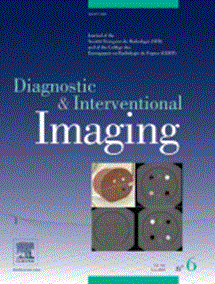3D post-processing in postmortem forensic imaging: Techniques, applications, and future directions
IF 8.1
2区 医学
Q1 RADIOLOGY, NUCLEAR MEDICINE & MEDICAL IMAGING
引用次数: 0
Abstract
Three-dimensional (3D) post-processing is now an essential part of postmortem forensic computed tomography (CT) imaging. Recent advances in this field include the development of sophisticated reconstruction algorithms, such as global illumination rendering. These tools enable the photorealistic, synthetic, and selective visualization of complex anatomical information with high degrees of accuracy. This technology is particularly valuable in bone injury cases because it facilitates lesion mechanism analysis. 3D representations are valuable tools in forensic investigations, including radiological analysis, communicating results, preparing autopsies, and presenting forensic findings in court. Several factors influence the quality of the final 3D representation, including the technical parameters of CT data acquisition and the appropriate use of post-processing software. This review provides an overview of the key factors that determine the quality of 3D forensic CT images, examines their applications and limitations, and discusses future directions.
死后法医成像中的3D后处理:技术、应用和未来方向。
三维(3D)后处理现在是尸检法医计算机断层扫描(CT)成像的重要组成部分。该领域的最新进展包括复杂重建算法的发展,例如全局照明渲染。这些工具能够以高度的准确性实现复杂解剖信息的逼真、合成和选择性可视化。这项技术在骨损伤病例中特别有价值,因为它有助于损伤机制的分析。3D表示在法医调查中是有价值的工具,包括放射分析、交流结果、准备尸检和在法庭上展示法医调查结果。影响最终三维表现质量的因素有几个,包括CT数据采集的技术参数和后处理软件的适当使用。本文综述了决定3D法医CT图像质量的关键因素,探讨了它们的应用和局限性,并讨论了未来的发展方向。
本文章由计算机程序翻译,如有差异,请以英文原文为准。
求助全文
约1分钟内获得全文
求助全文
来源期刊

Diagnostic and Interventional Imaging
Medicine-Radiology, Nuclear Medicine and Imaging
CiteScore
8.50
自引率
29.10%
发文量
126
审稿时长
11 days
期刊介绍:
Diagnostic and Interventional Imaging accepts publications originating from any part of the world based only on their scientific merit. The Journal focuses on illustrated articles with great iconographic topics and aims at aiding sharpening clinical decision-making skills as well as following high research topics. All articles are published in English.
Diagnostic and Interventional Imaging publishes editorials, technical notes, letters, original and review articles on abdominal, breast, cancer, cardiac, emergency, forensic medicine, head and neck, musculoskeletal, gastrointestinal, genitourinary, interventional, obstetric, pediatric, thoracic and vascular imaging, neuroradiology, nuclear medicine, as well as contrast material, computer developments, health policies and practice, and medical physics relevant to imaging.
 求助内容:
求助内容: 应助结果提醒方式:
应助结果提醒方式:


